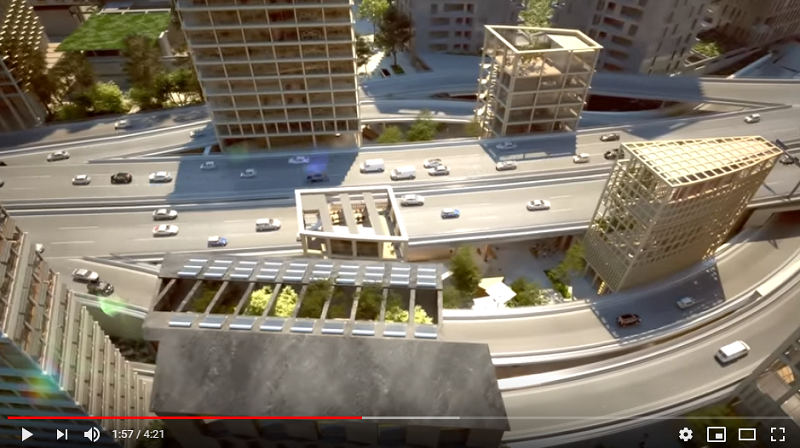While real estate projects are multiplying in the immediate vicinity of this 35 km ring that encloses the capital, it is time to adapt this road axis to its future environment. But this is not just a formality.
Concretely, the transformation involves the standardization of the axis with two times three lanes, including one reserved for buses, taxis and carpooling, the planting of 50,000 trees and the redevelopment of the gates to erase the border between Paris and its suburbs. A scheme that is not without arousing protests. Beyond the Council of Paris first, a certain number of elected officials believe they have a say in the future of this metropolitan axis, starting with the president of the region, Valérie Pécresse, or the prefect of police, Didier Lallly.
Within the Parisian assembly then, the debate promises to be animated this Tuesday.
On the right, we tick on the neutralization of a lane for carpooling and the opposition councilor Nicolas Jeanneté calls for a “global mobility plan for Paris and Ile-de-France instead of piling up plans that do not coordinate”.
In the center, the opponent Maud Gatel (MoDem) proposes for her part the closing of certain access ramps to reduce the effect of congestion.
On the left then, the consensus is not obvious either. Communist allies want alternative transport solutions, such as a circular metro line or the revival of the small rail belt for freight. Environmentalists are demanding more, such as lowering the maximum speed from 70 to 50 km / h – a campaign promise from the left in 2020, they recall – and a moratorium on constructions located less than 150 m of the device.
Limit urban development immediately around the ring road?
These last years, “the work of associations has demonstrated the alarming disappearance of green spaces adjoining the ring road in favor of buildings, most often offices”, they warn. Besides the need for green, “we must not recreate a new border with new offices, as we are creating at Porte de Montreuil and Porte de Vincennes”, believes the elected EELV Emile Meunier, who wants “stop exposing employees to pollution”. Porte Maillot, Bruneseau, Bercy-Charenton: environmentalists have “regularly opposed to construction projects around the ring road”, recalls her colleague Aminata Niakaté, for whom “we need consistency between what we say and what we do”.
“The surroundings of the ring road are seen as a financial windfall” by the executive on the left, castigates Valérie Montandon (LR). An observation shared by Danielle Simonnet (LFI), who targets “false hypocrisy” d’Anne Hidalgo.
For Nicolas Jeanneté (Les Centristes), the felling of more than 70 trees at Porte de Montreuil, where several office buildings are to come out of the ground, is thus undermining the “illusory desire to make the ring road a green belt”.
Green landscaping
The legacy of the Missika years, the former town planning assistant at the origin of now contested projects, is heavy to bear for his successor Emmanuel Grégoire who, on his twitter feed, defends his balance sheet “vert” socialists, citing the parks created on the ring road covered Porte des Lilas and Vanves or even the railway wasteland converted into an eco-district with a large park in Clichy-Batignolles. Highlighting the overhaul of Bercy-Charenton, the first deputy promises “50% revegetation in future development operations” and “more than 50% social housing” in the rehabilitation of popular neighborhoods along the axis. Bothered by the cancellation of the building permit for the so-called “Thousand Trees” building-bridge, which the administrative court judgedé “likely to harm public health”Emmanuel Grégoire promises that “all urban projects have been revised” to adhere to the future local urban plan. This PLU should be completed in 2023 with, he promises, a “very high level of environmental requirements”.
by Pierrick Yvon


